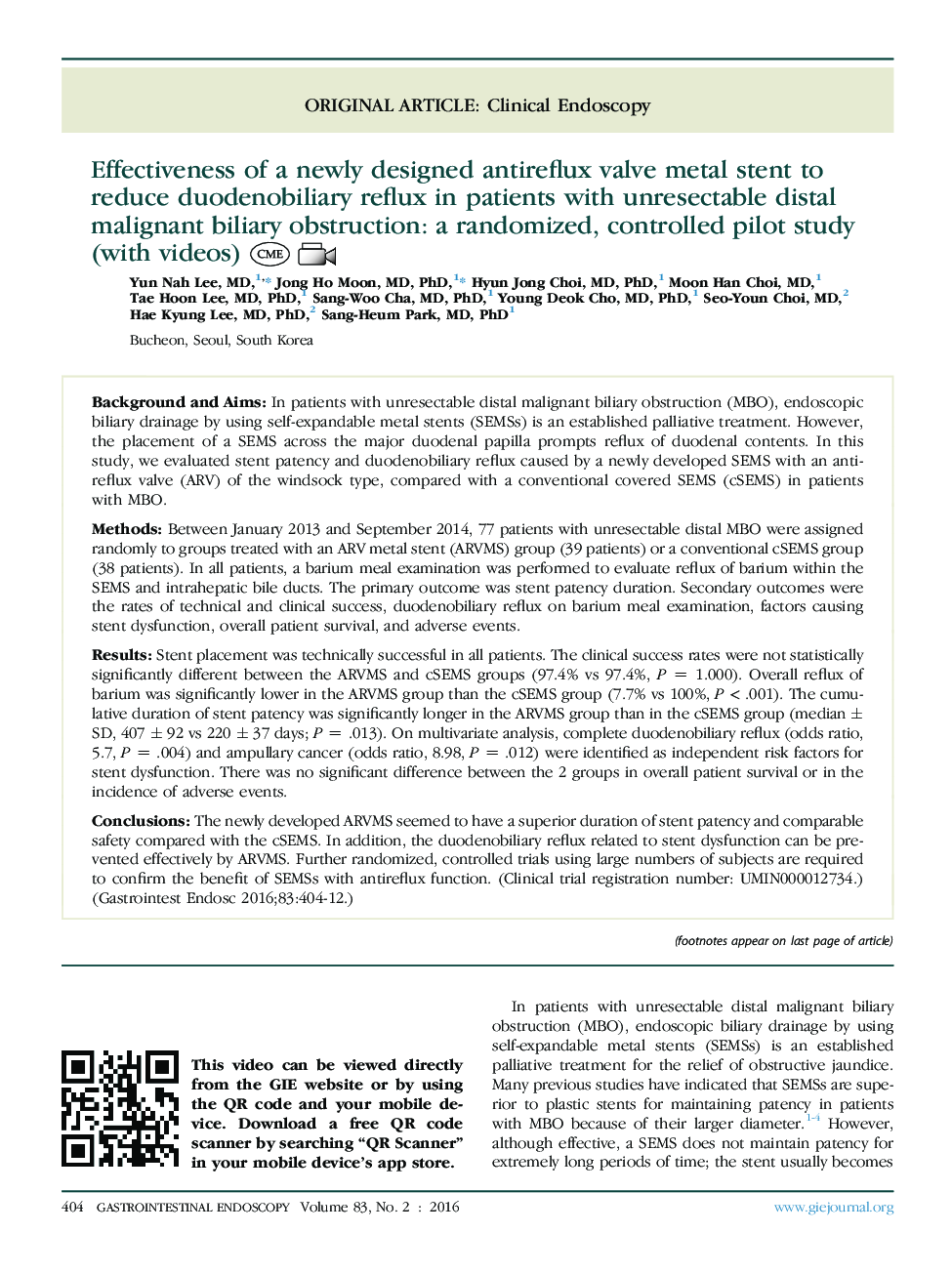| کد مقاله | کد نشریه | سال انتشار | مقاله انگلیسی | نسخه تمام متن |
|---|---|---|---|---|
| 3301940 | 1210284 | 2016 | 9 صفحه PDF | دانلود رایگان |

Background and AimsIn patients with unresectable distal malignant biliary obstruction (MBO), endoscopic biliary drainage by using self-expandable metal stents (SEMSs) is an established palliative treatment. However, the placement of a SEMS across the major duodenal papilla prompts reflux of duodenal contents. In this study, we evaluated stent patency and duodenobiliary reflux caused by a newly developed SEMS with an antireflux valve (ARV) of the windsock type, compared with a conventional covered SEMS (cSEMS) in patients with MBO.MethodsBetween January 2013 and September 2014, 77 patients with unresectable distal MBO were assigned randomly to groups treated with an ARV metal stent (ARVMS) group (39 patients) or a conventional cSEMS group (38 patients). In all patients, a barium meal examination was performed to evaluate reflux of barium within the SEMS and intrahepatic bile ducts. The primary outcome was stent patency duration. Secondary outcomes were the rates of technical and clinical success, duodenobiliary reflux on barium meal examination, factors causing stent dysfunction, overall patient survival, and adverse events.ResultsStent placement was technically successful in all patients. The clinical success rates were not statistically significantly different between the ARVMS and cSEMS groups (97.4% vs 97.4%, P = 1.000). Overall reflux of barium was significantly lower in the ARVMS group than the cSEMS group (7.7% vs 100%, P < .001). The cumulative duration of stent patency was significantly longer in the ARVMS group than in the cSEMS group (median ± SD, 407 ± 92 vs 220 ± 37 days; P = .013). On multivariate analysis, complete duodenobiliary reflux (odds ratio, 5.7, P = .004) and ampullary cancer (odds ratio, 8.98, P = .012) were identified as independent risk factors for stent dysfunction. There was no significant difference between the 2 groups in overall patient survival or in the incidence of adverse events.ConclusionsThe newly developed ARVMS seemed to have a superior duration of stent patency and comparable safety compared with the cSEMS. In addition, the duodenobiliary reflux related to stent dysfunction can be prevented effectively by ARVMS. Further randomized, controlled trials using large numbers of subjects are required to confirm the benefit of SEMSs with antireflux function. (Clinical trial registration number: UMIN000012734.)
Journal: Gastrointestinal Endoscopy - Volume 83, Issue 2, February 2016, Pages 404–412